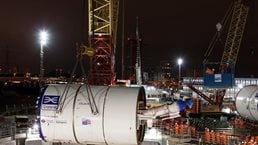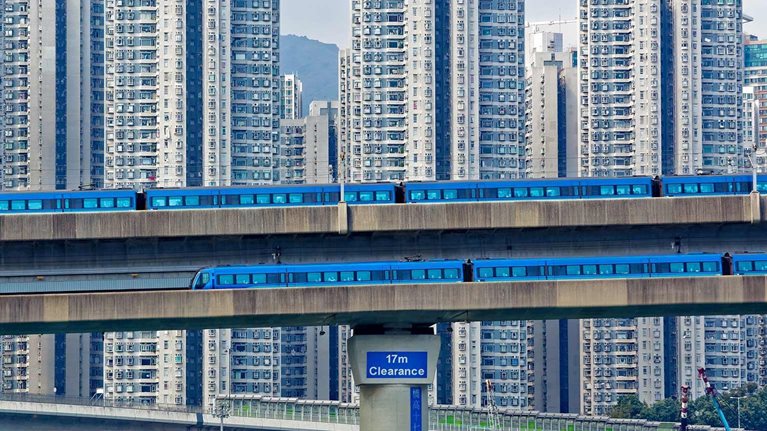For businesses in today’s digitally transforming, global world, success comes from having access to a critical mass of skills, products, and professional services. Get these things right, and collaboration and serendipity will likely do the rest.
Stay current on your favorite topics
Achieving this vital access may be relatively straightforward in a global center such as London, where commuters can travel by rail the full 360 degrees around the city, like the spokes of a wheel. The same cannot be said of other regional and nonmetropolitan areas.
That is one reason why the United Kingdom has a “two speed” economy, in which a few regions, such as London and the southeast, have healthy growth and globally competitive industries, while many others are lagging behind. As the Brexit vote indicated, there is a sharp political divide between those areas where globalization is seen as a positive and those where it is perceived as a threat.
The prospect of High Speed Two (HS2) in Britain, therefore, is well timed. The first phase of the $65 billion (£55.7 billion) project will link London to Birmingham in the West Midlands, with construction of new dedicated track expected to start next year. The second phase, which will follow some five years later, forms a Y-shaped track from the West Midlands toward Manchester and Leeds in the north, where the trains leave the high-speed network and continue to the northeast and Scotland.
When completed, the project will improve capacity and journey times to and from London. More important, it will transform connectivity among the cities and towns of the Midlands and the north, halving journey times and boosting reliability on trips between Birmingham and cities such as Leeds, Manchester, Wigan, and York. It will also substantially reduce journey times to destinations farther north, to cities including Edinburgh, Glasgow, and Newcastle.
That will improve the prospects for these regions by making it much easier for them to access the skills, products, and services they need. Add in the substantial cost savings that firms can achieve by locating in these newly connected cities, and the project will open up new areas for development.
HS2 represents the greatest upgrade to the United Kingdom’s domestic rail network in living memory. But it is much more than that. It is an opportunity to drive development and to rebalance the UK economy from south to north, fusing the towns and cities of the Midlands and the north into a powerful economic unit and reducing pressure on an overheating London economy.
In Leeds, the South Bank regeneration zone has attracted more than $650 million of investment in the past two years on the back of HS2’s arrival. In Crewe, HS2 services will help support the region’s ambition to double the size of its economy to more than $65 billion and create 70,000 new jobs.
Then there is Birmingham, the country’s second-largest city, where the first high-speed trains are scheduled to arrive in 2026. The transformation has already begun as companies recognize the huge potential of being at the heart of a fast and reliable nationwide service. Estimates are that the £1.7 billion Curzon development sited next to the new HS2 station will create 36,000 jobs and 4,000 new homes. Improved connectivity is one important reason that a major global bank is moving its retail headquarters from London to Birmingham, and why Birmingham Airport is looking at ways to harness HS2 to improve connectivity and boost its business.

Breaking the mold: How Crossrail’s Innovate 18 program works
The same is true in the East Midlands, home to Leicester and Nottingham. The rail service to Birmingham now is infrequent and takes almost an hour; after HS2, it will be a reliable 20-minute trip. New opportunities are opening up along the line as local authorities and businesses put HS2 at the heart of their strategies. The East Midlands expects 74,000 jobs to be created on the back of HS2, with significant housing and commercial development planned. Such projects, and others, are proof that businesses value fast, regular, and reliable links to suppliers, employees, and customers.
HS2 will help to meet the United Kingdom’s ever-increasing demand for travel. But it will have other, more indirect benefits, too. Shifting long-distance services onto HS2 will create new capacity for commuter trains and freight on the existing main lines and suburban routes. That should, in turn, ease chronic congestion on some motorways. The positive impact is not limited to the major metropolitan areas through which the new line passes. HS2 trains will also use existing rail lines to provide faster services to towns and cities beyond the new track, such as Carlisle, Darlington, Durham, Edinburgh, Glasgow, Liverpool, Newcastle, Preston, Stafford, Warrington, Wigan, and York.
The regional voice of Britain—so strong in the Victorian era, when the original railways were born—is making itself heard again. Just as that original railway helped translate the concept of Britain into economic reality, so too will HS2 help break down today’s economic barriers.


